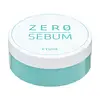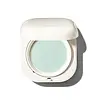What's inside
What's inside
 Key Ingredients
Key Ingredients

 Benefits
Benefits

 Concerns
Concerns

 Ingredients Side-by-side
Ingredients Side-by-side

Silica
AbrasiveMica
Cosmetic ColorantCaprylic/Capric Triglyceride
MaskingHydroxyapatite
AbrasiveDimethicone/Vinyl Dimethicone Crosspolymer
Skin ConditioningMethicone
Emollient1,2-Hexanediol
Skin ConditioningGlyceryl Caprylate
EmollientLimonene
PerfumingPinus Sylvestris Leaf Oil
MaskingWater
Skin ConditioningButylene Glycol
HumectantCitrus Aurantifolia Oil
CleansingEucalyptus Globulus Leaf Oil
PerfumingCitrus Aurantium Dulcis Peel Oil
MaskingCitrus Aurantium Bergamia Fruit Oil
MaskingGossypium Herbaceum Extract
Skin ConditioningCitrus Limon Peel Oil
MaskingSalix Alba Bark Extract
AstringentChamaecyparis Obtusa Leaf Extract
Skin ConditioningOriganum Vulgare Leaf Extract
Skin ConditioningCinnamomum Cassia Bark Extract
MaskingPortulaca Oleracea Extract
Skin ConditioningScutellaria Baicalensis Root Extract
AstringentLactobacillus/Soybean Ferment Extract
Skin ConditioningSilica, Mica, Caprylic/Capric Triglyceride, Hydroxyapatite, Dimethicone/Vinyl Dimethicone Crosspolymer, Methicone, 1,2-Hexanediol, Glyceryl Caprylate, Limonene, Pinus Sylvestris Leaf Oil, Water, Butylene Glycol, Citrus Aurantifolia Oil, Eucalyptus Globulus Leaf Oil, Citrus Aurantium Dulcis Peel Oil, Citrus Aurantium Bergamia Fruit Oil, Gossypium Herbaceum Extract, Citrus Limon Peel Oil, Salix Alba Bark Extract, Chamaecyparis Obtusa Leaf Extract, Origanum Vulgare Leaf Extract, Cinnamomum Cassia Bark Extract, Portulaca Oleracea Extract, Scutellaria Baicalensis Root Extract, Lactobacillus/Soybean Ferment Extract
Silica
AbrasiveCaprylic/Capric Triglyceride
MaskingDimethicone/Vinyl Dimethicone Crosspolymer
Skin ConditioningMethicone
EmollientWater
Skin ConditioningChamomilla Recutita Flower Water
MaskingEthylhexylglycerin
Skin ConditioningGlyceryl Caprylate
EmollientButylene Glycol
HumectantMentha Arvensis Leaf Extract
MaskingDipotassium Glycyrrhizate
Humectant1,2-Hexanediol
Skin ConditioningHydrolyzed Hyaluronic Acid
HumectantHydrolyzed Corn Starch
HumectantPinus Densiflora Leaf Extract
AntimicrobialTocopherol
AntioxidantDisodium EDTA
Silica, Caprylic/Capric Triglyceride, Dimethicone/Vinyl Dimethicone Crosspolymer, Methicone, Water, Chamomilla Recutita Flower Water, Ethylhexylglycerin, Glyceryl Caprylate, Butylene Glycol, Mentha Arvensis Leaf Extract, Dipotassium Glycyrrhizate, 1,2-Hexanediol, Hydrolyzed Hyaluronic Acid, Hydrolyzed Corn Starch, Pinus Densiflora Leaf Extract, Tocopherol, Disodium EDTA
 Reviews
Reviews

Ingredients Explained
These ingredients are found in both products.
Ingredients higher up in an ingredient list are typically present in a larger amount.
1,2-Hexanediol is a synthetic liquid and another multi-functional powerhouse.
It is a:
- Humectant, drawing moisture into the skin
- Emollient, helping to soften skin
- Solvent, dispersing and stabilizing formulas
- Preservative booster, enhancing the antimicrobial activity of other preservatives
Butylene Glycol (or BG) is used within cosmetic products for a few different reasons:
Overall, Butylene Glycol is a safe and well-rounded ingredient that works well with other ingredients.
Though this ingredient works well with most skin types, some people with sensitive skin may experience a reaction such as allergic rashes, closed comedones, or itchiness.
Learn more about Butylene GlycolThis ingredient is an emollient, solvent, and texture enhancer. It is considered a skin-softener by helping the skin prevent moisture loss.
It helps thicken a product's formula and makes it easier to spread by dissolving clumping compounds.
Caprylic Triglyceride is made by combining glycerin with coconut oil, forming a clear liquid.
While there is an assumption Caprylic Triglyceride can clog pores due to it being derived from coconut oil, there is no research supporting this.
Learn more about Caprylic/Capric TriglycerideThis ingredient is a silicone used to improve the texture of products and absorb oil. It does not get absorbed into the skin.
Like other silicones, Dimethicone/Vinyl Dimethicone Crosspolymer helps condition the skin by creating a barrier. In this sense, it can act as an emollient and trap moisture in.
This ingredient is a type of elastomer.
Learn more about Dimethicone/Vinyl Dimethicone CrosspolymerGlyceryl Caprylate comes from glycerin and caprylic acid, a fatty acid from coconut. It has emollient and emulsifier properties.
As an emollient, it helps hydrate your skin. Emollients work by creating a barrier on your skin to trap moisture in, helping to keep your skin soft and smooth.
On the other hand, emulsifiers prevent ingredients (such as oil and water) from separating.
Learn more about Glyceryl CaprylateMethicone is a type of silicone and is a simpler form of dimethicone.
Silicones are used to enhance the texture of products and have emollient properties. Methicone is used to give products a silky texture and improves spreadability.
Silica, also known as silicon dioxide, is a naturally occurring mineral. It is used as a fine, spherical, and porous powder in cosmetics.
Though it has exfoliant properties, the function of silica varies depending on the product.
The unique structure of silica enhances the spreadability and adds smoothness, making it a great texture enhancer.
It is also used as an active carrier, emulsifier, and mattifier due to its ability to absorb excess oil.
In some products, tiny microneedles called spicules are made from silica or hydrolyzed sponge. When you rub them in, they lightly polish away dead skin layers and enhance the penetration of active ingredients.
Learn more about SilicaWater. It's the most common cosmetic ingredient of all. You'll usually see it at the top of ingredient lists, meaning that it makes up the largest part of the product.
So why is it so popular? Water most often acts as a solvent - this means that it helps dissolve other ingredients into the formulation.
You'll also recognize water as that liquid we all need to stay alive. If you see this, drink a glass of water. Stay hydrated!
Learn more about Water